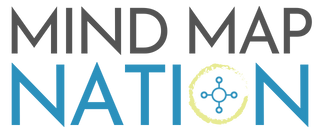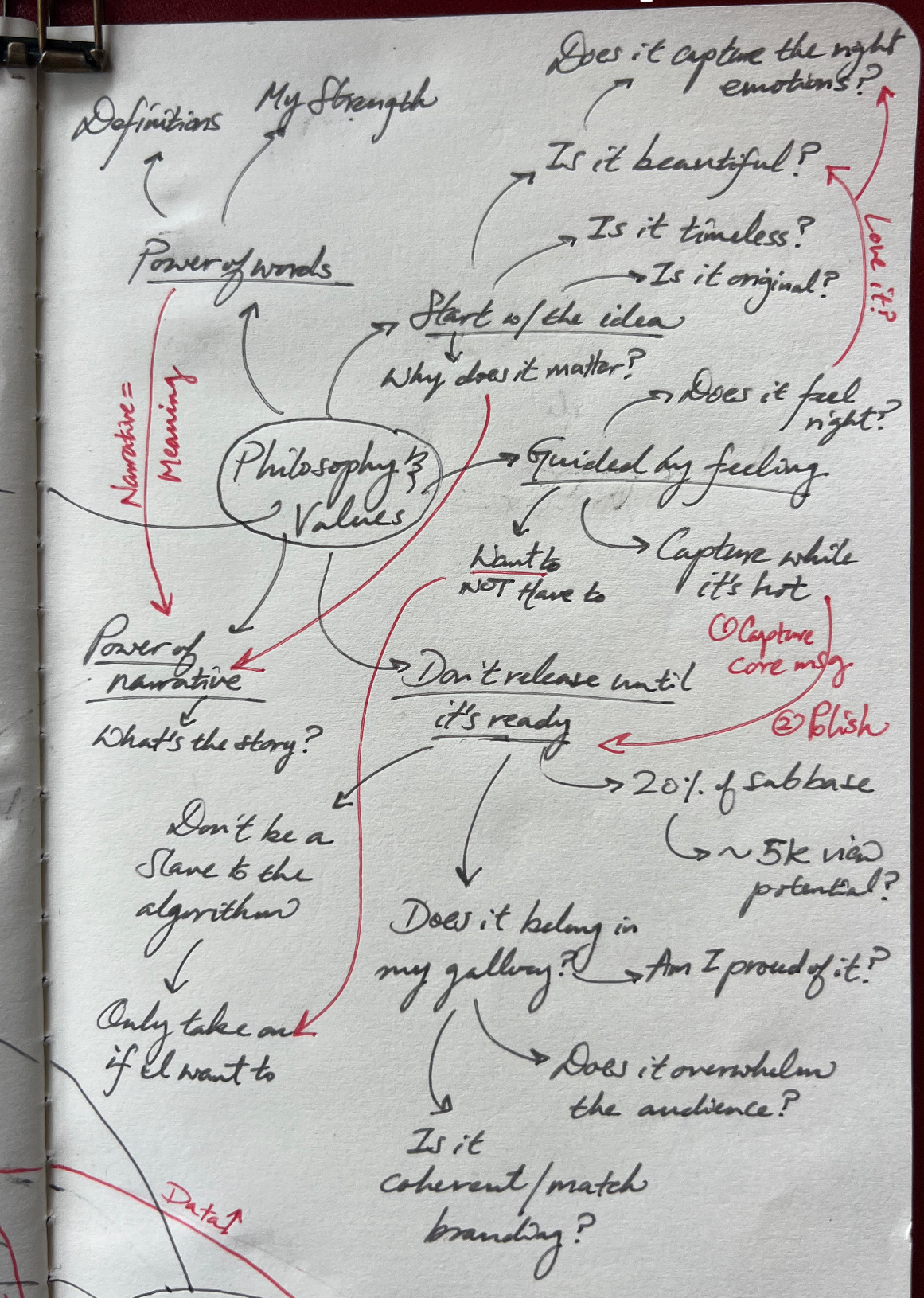Why Most Goals Fail
The word “decide” comes from the Latin term decidere which means “to cut off”.
Making decisions involves eliminating countless other possibilities before you. Life can be viewed as a mind map: your past decisions followed one linear path and ahead of you lies a massive tangle of different directions.
Most goals fail when we forget this fundamental truth and underestimate how many decisions it takes to achieve them.
There’s always this honeymoon period when we start something new. The world seems to be full of opportunities, gold rushes everywhere. The FOMO is real. So we jump in with wild enthusiasm.
Yet the activation energy never seems to last.
Before we know it, we’re swept far away from where we wanted to be, exhausted by doubt and poorer than we started. Worse, we see others succeeding where we failed.
In the past three years that I’ve helped people navigate their decision terrain, I’ve narrowed down the problem to a single missing piece.
Goals are fragile
At any given time, each of us is pursuing a solar system of connected goals. When we branch off on a new goal, we’re only aware of the first binary decision of yes or no.
The reality is that every goal is achieved through a series of projects that require their own set of decisions. Multiply this by the number of projects by the number of goals by the number of days in a year, and we’ll quickly get buried under a mountain of choices.
Unfortunately most people only chase their dreams at the Goals and Projects level that’s constantly changing.
When I dig deeper, I often find that they don’t have a values system in the center to filter through all the good-sounding options, so they get lost in the forest of possibilities and lose sight of where they’re going.
Without values, every opportunity becomes a distraction.
That’s because beyond the shores of our personal influence lies change. Our environment, the economy, and very our own bodies are constantly in flux. Goals are inherently fragile because they exist in this brutal frontier and break under enough change.
Whereas values are resistant to the whims of fate and get updated as we pursue our goals. Having clear values is like owning a magical compass that makes all downstream decisions way easier.
Not having to second guess yourself at every step gives you the bandwidth to make the few choices that truly matter.
The difference is huge.
That’s why I begin every new project by mapping out my guiding values.
Mapping values
For the past year, I felt increasingly “off” about the content I was making. I had become a slave to the algorithm cranking out new videos every week, studying popular creators, and chasing the hottest topics that I thought would resonate with my audience.
And when my videos didn’t perform well, it was my ego that got hurt. After months of this, I not only lost my creation drive, but had become the very Internet noise that I hated.
I knew a reboot was needed to set things right again.
My first impulse was go straight to the low hanging tasks like branding and changing thumbnails. Then I realized that without guiding values, these tactical elements would always be at the mercy of my latest inspiration.
I could already see myself ending up right back where I started.
So I decided to first map out why and how I wanted to approach the new project:
Every new initiative should begin with values. These guiding principles make downstream decisions and execution much easier.
Creating this map has two steps that you can do on any piece of paper:
Expand whatever principles that come to mind. Don’t overthink it!
Define what these principles mean with related questions.
For instance, ideas are the most important part of the content creation process, so I expanded the “start with the idea” node with related questions like “why does it matter (for my audience)?” and “is it timeless and beautiful?”, which is another way of asking “do I love it?”.
This simple mind map encapsulates my new project direction and the standards that I hold myself to:
Share beautiful ideas in beautiful ways (my definition for beauty “is that in the presence of which we feel more alive” - John O’Donohue). Do these ideas touch me and my audience?
Release a video only when it’s ready. Is it good enough to display it in my gallery? Does it have the potential of hitting a view count that’s at least 20% of my subscriber base (rough metric for YouTube success)?
Leverage my talent with words. How can I express my ideas in stories and frameworks that help people navigate uncertainty?
At the end of the exercise, I further distilled my content philosophy into two basic questions:
What do I want to say?
How do I want to say it?
If I’ve got nothing valuable to express, then I rather shut up than contribute to the noise.
These values have already began shaping my work in profound ways.
My last video shared deeply personal lessons in a way that captures the emotions of how I dealt with burnout. I still shared mind mapping techniques, but they were woven into a cinematic narrative that’s beautiful to watch.
It’s best video I’ve ever made production-wise. I’m proud of displaying it on my channel, which was also massively trimmed down to showcase only the top content like a gallery.
Most importantly, I no longer have to wonder if I’m on the right path. Whenever I feel doubt creeping in, all I have to do is refresh myself with these base principles.
This, my friends, simplifies everything we do.
What values do you live and work by?
Make the most of your mind maps
Thanks for reading this article. If you found it useful, you can get a new mind map in your inbox every week. Epiphany is your dose of structured thinking and ordered chaos.



